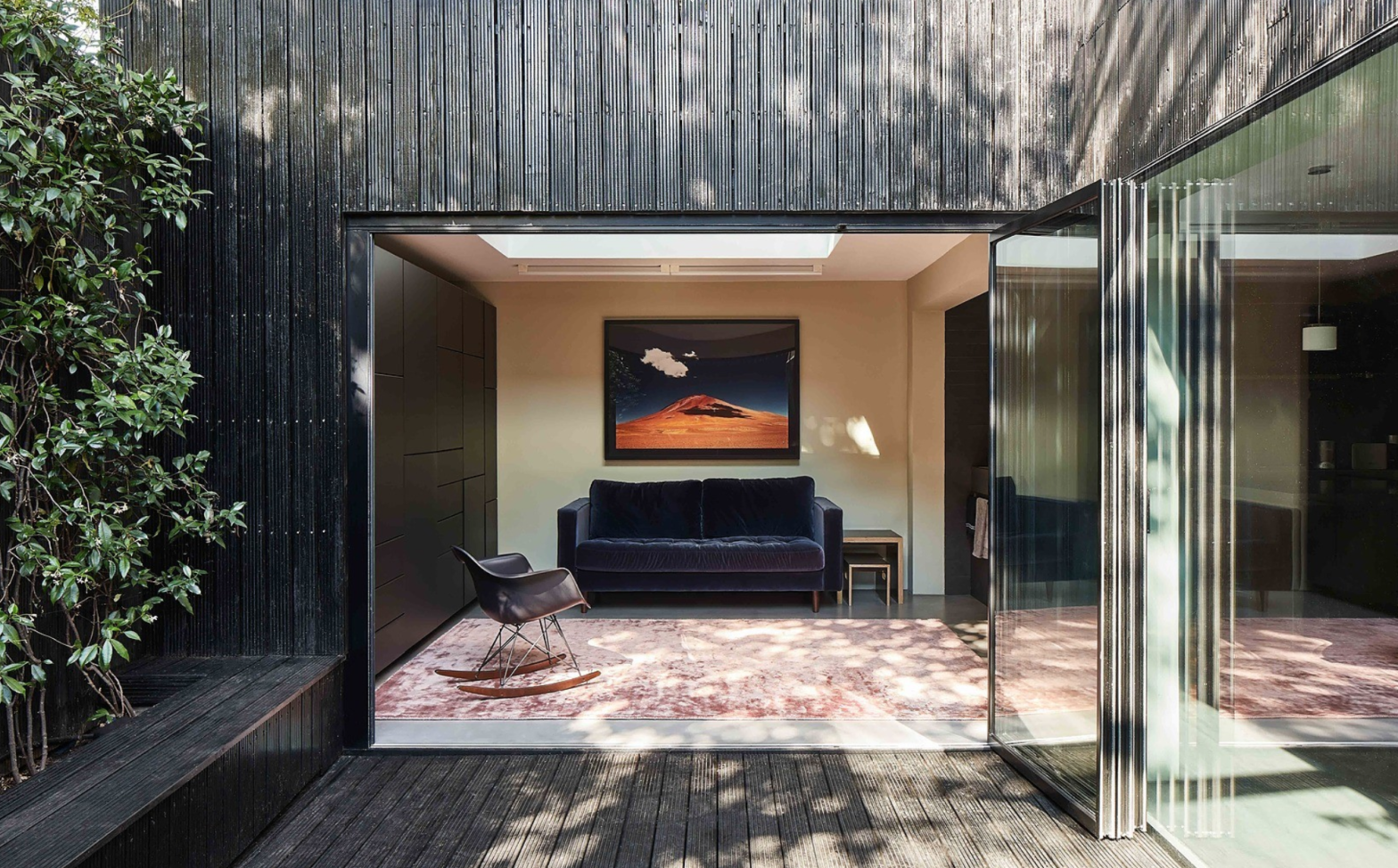In our first part of this two-part interview series with Ed Reeve of Blackwood House, we spoke about his life as a photographer and what it has been like as a location house owner. If you want his tips and what he looks for in a location agency, make sure you check out part one here. In this second part of our interview with Ed, we sat down to talk about his design style, how it influenced his one-of-a-kind home and the work that went into building such a unique property.
Rob – “So, do you think your work as a photographer has influenced your design style within the property Ed?”
Ed – “Yes definitely! Because I work in the field of design and architecture, I get to see and experience a lot of great architecture and design. So along the way, I’ve just made lots of notes and Pinterest is always there to help collect inspiration. There’s also all the contacts I’ve made along the way, Sir David Adjaye designed this house with me, for example.

Rob – “We will definitely get into that in more detail later. But for now, can you elaborate on anything that influenced your design style within your home?”
Ed – “Of course! So despite the minimal look, we do have stuff, it’s just very well hidden. We have lots of storage and I think that’s the key to at least appearing like a minimalist [laughter]. I mean, we’ve got kids, there are toys and everything else that comes with children. But because we have a lot of shoots here, having storage makes it very easy to tuck it all away and then it’s never a problem if we get a last minute shoot.”
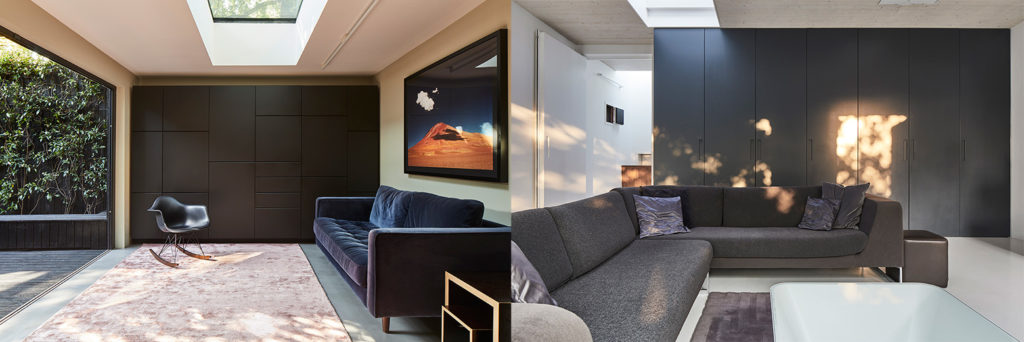
Rob – “So how did you decide that minimalism was what you were interested in?”
Ed – “Well, I think I first became a minimalist, not so much by choice but because I didn’t have any money. Minimalism was just a way to explain not buying anything. I’d have people round to my warehouse in Shoreditch, who’d ask where all my things were. Being a minimalist is a choice, whereas being strapped for cash isn’t, so I guess then it was out of pride. These days I don’t like having a lot of stuff, so now it’s a choice, but I have the things that I need and a few items I cherish. My aim is to have things that satisfy both beauty and usefulness.”
Rob – “Would you say it’s become a way of life also or more just an interior design style?”
Ed – “I think it’s more of a way of life, we like to keep things simple; we don’t like to complicate our lives and that tends to lead to a stress-free life. It’s that classic – tidy space equals a tidy mind. I also find that the more that you own, the more it owns you. Everything you have requires some sort of maintenance, storage or cleaning and so the more stuff you have, the less time you have. I think people are starting to understand that now, there’s not so much reward and satisfaction from having things; people are starting to spend more time on experiences rather than possessions. So, I think minimalism is a sort of cultural shift that has happened organically everywhere.”

Rob – “Do you have any influences in design?”
Ed –“I get inspiration from lots of designers and architects. I love the work of Charles Eames because you can just see the thought process that went into creating. I went to an Eames exhibition at the Barbican many years ago and they showed how they’d test chairs for durability; it’s fascinating how they make these pieces of furniture to last, but they are also incredibly comfortable and are aesthetically pleasing.”
“I think when you have design that accomplishes all of those things (durable, aesthetic and comfortable), you are left with perfect design. It’s not too easy to achieve all three, so I tend to drift towards designers that can.”
“So here, we like to have a few standout pieces that we really like and admire, rather than having lots of satisfactory things.”
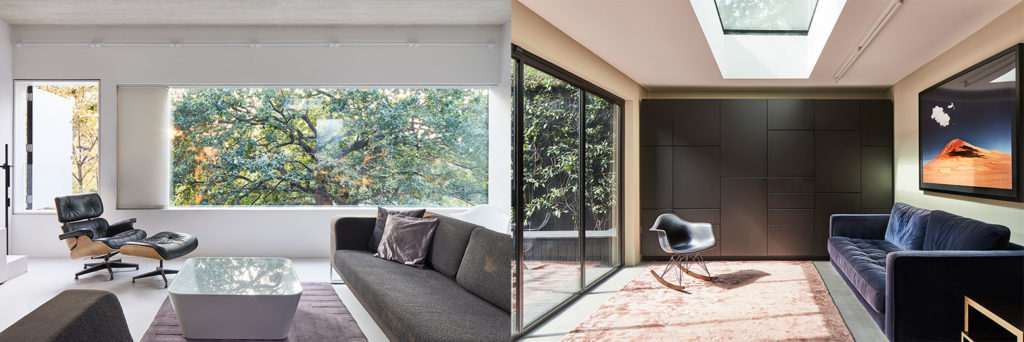
Rob – “Can you describe your favourite pieces of furniture that represent your style within your property – you do have some outstanding pieces”
Ed – “Thank you, we think so! So, we’ve got the classic Eames armchair upstairs, which is probably the oldest item of furniture I own; I’ve had it for a very long time and it’s become a bit of a cliché, but I love it. I had it in my old Shoreditch warehouse, which I got from a client who was a furniture dealer. But then I’ve also had a few things made to fit the aesthetic of the house.”
“I have this amazing friend, whom we call Jona the genius joiner – he’s made a lot of things in the house. For example, the media cupboard we have in the living room upstairs – it’s this beautiful white, glossy unit that houses all the ugly components of a media system. So, you’ve got your amplifier, your digibox, all your wires etc, all out of sight. It has a fabric door in the middle, which was an idea I had, so we could have the sound and the remote control work through the fabric, without having to open up the cupboard.”
“I also had the dining room table made, as I wanted a simple dark wood table. It’s solid walnut. The kitchen is a grey stained oak by Poliform – they’re an Italian kitchen maker. So there’s a lot of dark wood in the house, the stairs are a dark wood, with a really nice solid feel to them. Jona also made all the cupboards upstairs, which are great for hiding away all our books and things, we do have a fair amount of stuff, it’s just well hidden.”
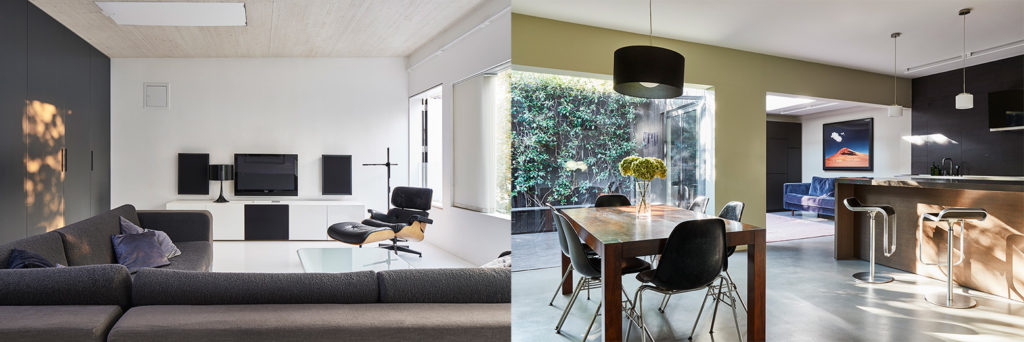
“I mean even though we do have these classic design pieces, we also have a lot of Ikea which is great when you have kids, you can just tuck everything away. Like these cupboards here (downstairs living room) are all Ikea, we just had them jumbled up, which makes it look really contemporary, interesting and unique.”
Rob – “So moving on to the design of your house – you mentioned that you and your friend, Sir David Adjaye designed it together. Can you go into a bit of detail about that?”
Ed – “So I met David early on in both of our careers. We had both just graduated and both needed pictures for our portfolios; he needed images of his architecture and I needed a portfolio of photos of great architecture. So I photographed lots of his work – he was very appreciative and said he’d return the favour in the future. I kind of jokingly said ‘oh are you going to design a house for me?’ To which he said ‘if you want’. So, years went by and I stumbled across this plot of land, it was just a builder yard, so a completely empty site. He kindly came to have a look, told me it was perfect and that I should buy it. So I did!”

“We sat down and I told him what my vision was. It was incredible, I just gave him this list of things I wanted from a home; he’s brilliant at interpreting people’s visions and creating a design from it. Not just your practical needs, but also your emotional needs, the way you want to live. I think in my case it was even better because he already knew who I was, he had an understanding of how to bring my ideas to life.”
“He was able to design something that was sympathetic and compatible with my character and lifestyle. My wife and I both lead very busy lives, we travel a lot for work, so one of the key things we needed was for the house to be low maintenance. We are both time poor, so we couldn’t have anything too fussy or overcomplicated, a nice clean design and somewhere we could come back from our travels and immediately relax, spend time with the kids and have friends over.”
Rob – “Was the black stained wood always on your mind when creating the home?”
Ed – “No it wasn’t actually; all I knew was that I really wanted wood. David had previously done a lot of incredible architecture, but it had all been concrete. So, I said to him that I loved the aesthetic and style of what he was doing, but I wasn’t a big fan of concrete. It’s also not very environmentally friendly; I travel a lot, so I already have a big carbon footprint with a lot of air miles every year. So, to offset my guilt I suppose, I asked if there was something we could do with wood.”
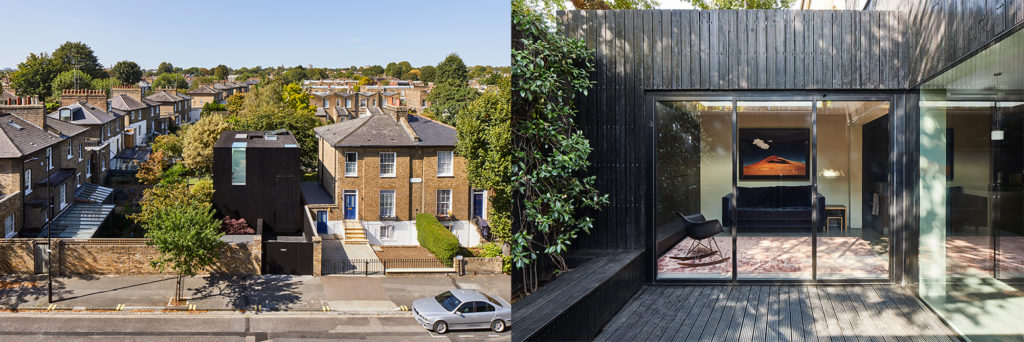
“Not only is the look of the house wood, with the exterior entirely clad in wood, the superstructure is also wood. All the floors and walls of the superstructure are solid timber, not just the frame. The structure of the house is like giant sheets of plywood that were made in a factory, brought over on two trucks, one each day and these panels of plywood, as wide as a truck, were craned into place and screwed together. Essentially, the house structure is just solid timber sheets with really long screws. There’s no steel, no concrete, nothing else – completely ready engineered as it came out the factory. Following that, it was just putting the windows in and cladding, incredibly simple and quick to implement. I personally think it’s the way forward.”
Rob – “So before we move on, our readers love to know the answer to these next two questions… Can you describe any of the highlights you had while designing the property?”
Ed – “It was actually a really enjoyable process working with David; he’s so insightful, you throw all these things at him and he’s incredible at coming up with solutions. At the end of the day, designing a house is problem solving. We spent a lot of time thinking about the light and where we would be in the house at different times of the day. Also, just the practicalities of what it would be like living in a house like this.”
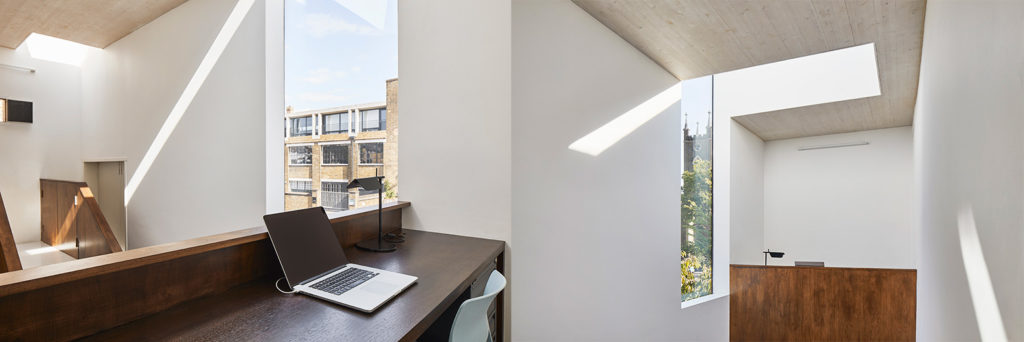
Rob – “I was watching a programme the other day on unique building designs and they said that skylights bring in around 60% more light. It does make sense, but is just fascinating to hear and comprehend.”
Ed – “Well one of the main reasons we built this extension to the side of the kitchen was to bring more light into the space. With a solid wall there, it could get quite dark in the kitchen as I’m sure you could imagine.
Rob – It really added a lot to the space, I suppose with the skylight and the glass wall, you get tons more light in here. It’s really nice that you were able to do it with an old friend as well!”
Ed – “Yes, it was amazing being able to do it with a friend, it really was.”
Rob – “So did you face any challenges or setbacks when designing the place?”
Ed – “Any challenges or setbacks? We actually thought there would be great challenges as it was a new house in a conservation area. Not only did we have the challenge of getting planning permission for something that was very different. But we also had to get past the conservation area committee. So, I went to see Hackney Council and said ‘look I’m thinking of buying this plot of land, am I being crazy or am I going to be able to build something interesting there?’”

I said that ‘I want to build a contemporary house’, to which they responded, ‘that’s perfect, we actually hate pastiche’. ‘Please don’t build a modern copy of a Victorian house, as they look awful’. All they asked was for the build to be sympathetic, to follow the building line at the front and the eaves line at the top (the roof line). Don’t go bigger or grander, stick to the dimensions and proportions of everything else around it and you’ll be fine.”
“So, that was actually enough guidance for me to go ahead and buy the land. I went round to all the houses on the street, introduced myself, letting them know that we were going to become neighbours, that I wasn’t a developer and was building my family home. I wanted to make sure that they were all happy with what I was doing and if they had any concerns, to voice them then, in the design stage, rather than on site. There were a few concerns, but they were all happy with what was being built and were relieved that it was something interesting. I think their fear was that a developer would buy the land and build some cheap flats that would completely ruin the aesthetic of the road; It’s actually become a real asset to the area.”

“The neighbours were great in the whole process, they all wrote letters of support, so we got planning permission and conservation area consent in 8 weeks – it went straight through with no objections and five letters of support. So that’s a tip, if you want to build, get all your potential neighbours on side. Even if you’re a developer, just be sympathetic with the road, the people and what’s already around you.”
Rob – “That’s so interesting! Would you consider working with Sir David again on another property?”
Ed – “Absolutely! It was a wonderful experience! I mean, anyone who has watched Grand Designs before knows that as much as it can be a rewarding experience, it can be incredibly stressful; you inevitably go over budget. But working with David was actually this great experience. I felt taken care of and listened to and I loved all the things he was coming up with. So, if he wanted to design another house with me, I’d jump at the chance. It might be a bit difficult though, as he’s moved back to Ghana with his family. We’re still great friends though and keep in touch. I would like to design another house though, for sure!”
Rob – “I was going to ask, is this your forever home now or…”
Ed – “We’ll be here for a long time. We love it here, it’s great for the kids, they’re at a really good school round the corner and it’s a great location that’s really easy to get into town.”
Rob – “Okay amazing, Ed, thanks so much for everything – a superb interview, I’m sure our readers will love to read.”
